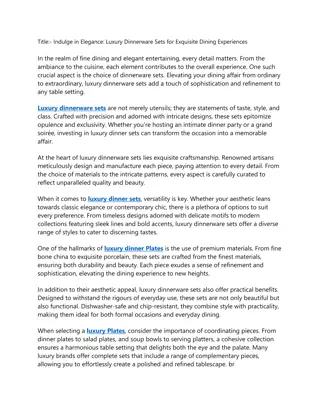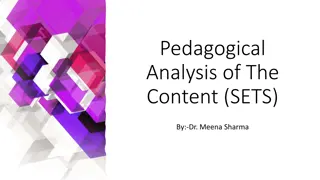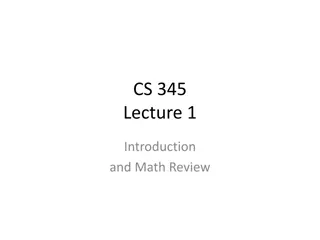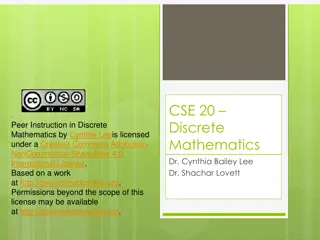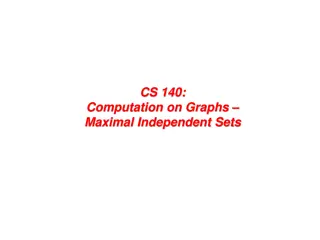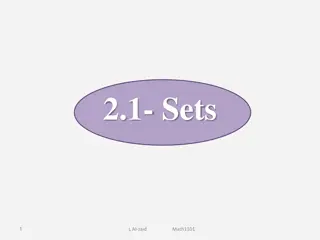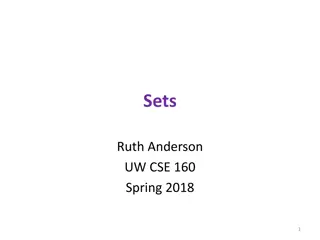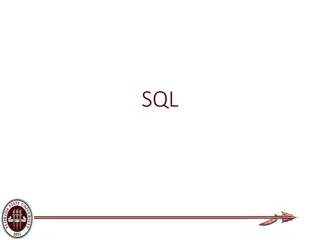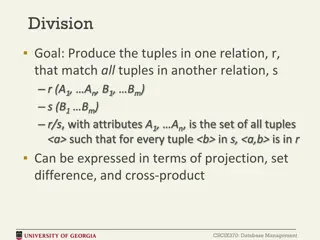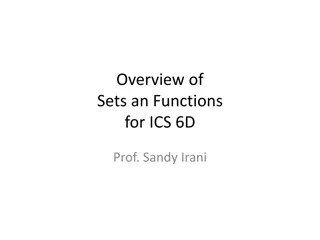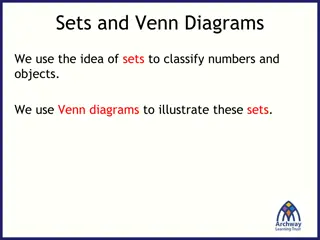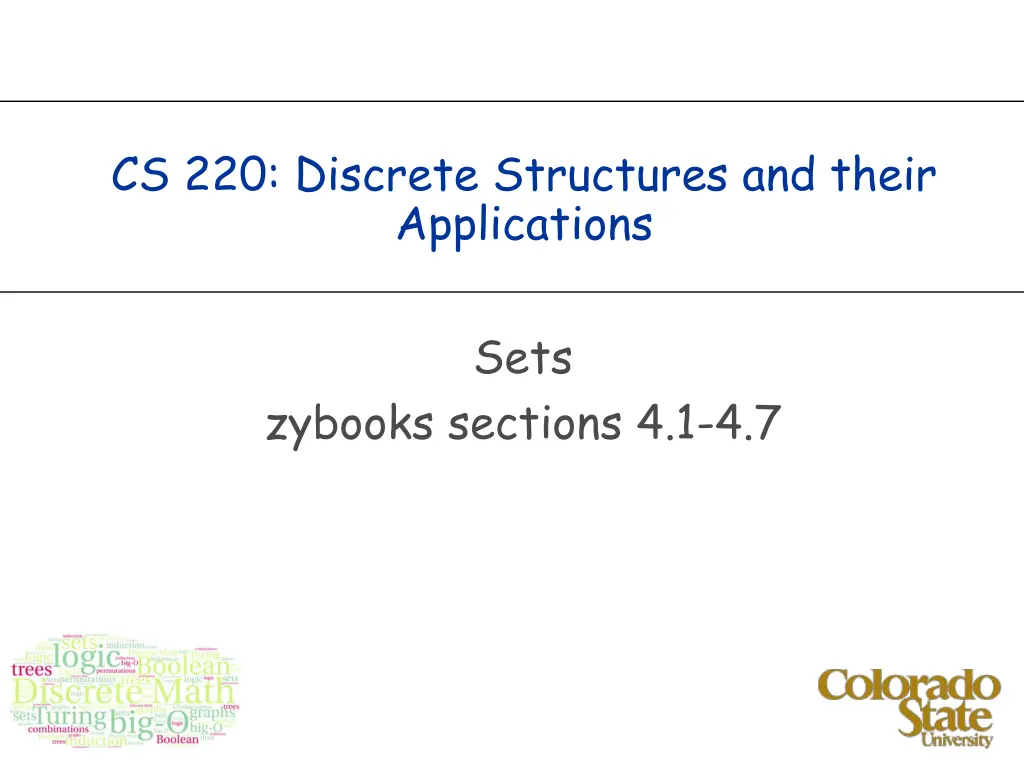
Understanding Sets in Discrete Structures
Explore the concept of sets in discrete structures, including notation, examples, cardinality, and subsets. Learn about roster notation, set builder notation, and how to define sets using properties, along with the basics of set theory.
Download Presentation

Please find below an Image/Link to download the presentation.
The content on the website is provided AS IS for your information and personal use only. It may not be sold, licensed, or shared on other websites without obtaining consent from the author. If you encounter any issues during the download, it is possible that the publisher has removed the file from their server.
You are allowed to download the files provided on this website for personal or commercial use, subject to the condition that they are used lawfully. All files are the property of their respective owners.
The content on the website is provided AS IS for your information and personal use only. It may not be sold, licensed, or shared on other websites without obtaining consent from the author.
E N D
Presentation Transcript
CS 220: Discrete Structures and their Applications Sets zybooks sections 4.1-4.7
sets Set: An unordered collection of objects The objects in a set are called its members or elements. Example: {2, 4, 8} is the set containing the elements 2, 4, 8 This form of specifying a set is called roster notation {2, 4, 8} is the same set as {4, 2, 8} (unordered)
sets Set: An unordered collection of objects The objects in a set are called its members or elements. Notation for set membership a A means a is an element of the set A. A = {1, 2, 3, 4, 5} 4 A Upper-case letters for sets Lower-case letters for elements in the set
Examples V={a, e, i, o, u} Set of vowels B={False, True} Boolean values O={1, 3, 5, ... ,99} Odd numbers between 1 and 99
Examples The natural numbers The integers The positive integers The rational numbers N = {0,1,2,3 } Z = { ,-2,-1,0,1,2, } Z+= {1,2, } Q Cardinality of a set: number of distinct elements in the set. Denoted by |S|. A set is finite if its cardinality is finite (and infinite otherwise) A = { x N : x 2000 } what is |A| ? B = { x N : x 2000 } what is |B| ?
Building sets Sometimes it s hard to list all the elements of the set explicitly E.g. the set of all odd numbers less than 100: O = {1,3,5, ,99} Ellipsis is used instead of the omitted elements Instead we can characterize the set by the property its elements satisfy: O = {x : x is an odd positive integer less than 100} This is called set builder notation
Set builder notation We can express the set O = {1,3,5, ,99} using set builder notation: O = {x Z+:x is odd and x < 100} Definition of set builder notation: A = {x S : P(x)} or A = {x S | P(x)} S a set P(x) a predicate Example: D = { x R : |x| <1 } Can also be written as : D = { x : x R and |x| <1 }
Subsets A set A is said to be a subsetof a set B if and only if every element of A is also an element of B. Notation: A B Using logic: A B x (x A x B) Example: {1, 2, 4} {1, 2, 3, 4, 5}
Questions {1, 2, 3} {2, 3} ? {1, 2, 3} {1, 2, 3} ? What can we say about the relationship between the cardinalities of A and B if A B?
Proper subsets A is a proper subset of B if A B and there is an element of B that is not an element of A. Notation: A B Example: {1, 2, 3} {1, 2, 3, 4, 5}
Venn diagrams Graphical representation of sets U the set of all objects A B A U B U A B
Example integers between 1 and 9 even 2 4 6 8 1 3 odd 5 7 9 prime
Set equality Two sets are equal if and only if they have the same elements. We write A=B to denote set equality Using logic: A=B x (x A x B)
The empty set The empty set has no elements. Notation: {} or Is {1,2,3}? Yes! Since x x x {1, 2, 3} In fact, this is true for any set. The cardinality of is zero: | | = 0.
Questions Is{a} {a}? Is {a} {a}? Is {a} {a,{a}}?
sets of sets As the previous example suggests, a set can have a set as an element! Example: A = { { 1, 2 }, , { 1, 2, 3 }, { 1 } } Note the following: 1 A { 1 } A { 1 } A since 1 A. The empty set is not the same as { }
The power set The power set of a set S is the set of all subsets of S. Notation: P(S) Examples: P({0,1,2}) = { , {0}, {1}, {2}, {0,1}, {0,2}, {1,2}, {0,1,2}} P( ) = { } Theorem: Let A be a set of cardinality n, then |P(A)| = 2n.
The power set Video game example: Given there are four objects a player could pick up, what are all the possible states the player could be in with respect to the set of objects O = {coin, apple, sword, shield} Answer: P(O)
set intersection The intersection of sets A and B is the set containing those elements that are in both A and B. Notation: A B A B = { x : x A and x B}. Example: {1,2,3} {1,3,5} = {1, 3} Two sets are called disjoint if their intersection is the empty set. U A B
set intersection You can take the intersection of infinite sets: A = { x Z : x is a multiple of 2 } B = { x Z : x is a multiple of 3 } A B = { x Z : x is a multiple of 6 }
set union The union of sets A and B is the set that contains those elements that are either in A or in B, or in both. Notation: A B A B = { x : x A or x B }. Example: {1,2,3} {1,3,5} = {1,2,3,5} U A B
operations on multiple sets The use of parentheses is important! E.g., what is A B C ?
intersection/union of many sets applying the intersection/union operations to large numbers of sets:
set difference The difference of sets A and B is the set containing those elements that are in A but not in B. A - B = { x | x A and x B }. Example: {a, b, c, e, f} {d, e, f, g} = {a, b, c}
symmetric difference The difference operation is not commutative since it is not necessarily the case that A - B = B - A. Check this in the diagram The symmetric difference between two sets, A and B, denoted A B, is the set of elements that are a member of exactly one of A and B, but not both. Also defined as: A B = ( A - B ) ( B - A ) Check it again
set complement The universal set: the set of all elements in some domain (e.g. positive integers) The complement of a set A is the set of all elements in the universal set U that are not elements of A. Notation: An alternative definition: U - A
set complement Example: What is the complement of the natural numbers (N) with respect to the integers (Z)?
expressing sets operations using logic x A B (x A) (x B) x A B (x A) (x B) x (x A) The sets U and correspond to the constants true (T) and false (F): x F x U T
DeMorgan's laws for sets We can use the laws of propositional logic to derive corresponding set identities: Result:
Every set identity has a corresponding rule of propositional logic
tuples If order matters: An ordered n-tuple is a sequence of n objects (a1, a2, , an) First component is a1 n-th component is an An ordered pair: An ordered triple: 3-tuple (a, b, c) 2-tuple (a, b) Sets do not have the same element more than once: {1, 1, 2} = {1,2} Tuples can have the same element more than once: (1,1,1) is a valid 3-tuple
tuples Two tuples are equal iff corresponding pairs of elements are equal: (a1, a2, , an) = (b1, b2, , bn) iff a1 = b1, a2 = b2, , an = bn (2, 1) (1, 2), but {2, 1} = {1, 2} Think of tuples as book chapters and sections (1, 1) : Chapter 1, section 1 (1, 2, 4): Chapter 1, section 2, sub-section 4
cartesian products The cartesian product of sets A and B is denoted by A x B and is defined as: { (a, b) : a A and b B} Example: A = {1, 2}, B = {a, b, c} A x B = { (1, a), (1, b), (1, c), (2, a), (2, b), (2, c)} Is A x B the same as B x A?
cartesian products Cartesian product of the sets A = {x, y, z} and B = {1, 2, 3} image from https://en.wikipedia.org/wiki/Cartesian_product
cartesian products The cartesian product R x R (R being the real numbers) gives every point in a 2D plane a pair of x,y coordinates: y coordinate x coordinate
cartesian products Fact: |A x B| = |A| * |B| Example: A = {1, 2}, B = {a, b, c} A x B = { (1, a), (1, b), (1, c), (2, a), (2, b), (2, c)}
cartesian products The cartesian product of sets A1, ,An is the set of n- tuples (a1,a2, ,an), where ai Ai for i=1, 2, , n. Denoted by A1 x A2x, ,x An Example: A={0, 1}, B={2, 3}, C={4, 5, 6} What is A x B x C? What is |A x B x C|?
cartesian products of a set with itself You can take the cartesian product of a set with itself. Given a set A we can look at A x A (denoted A2), and more generally A x A x ... x A denoted as Ak. k times Example: if A = {0, 1}, then Ak is the set of all ordered k-tuples whose entries are bits (0 or 1). {0, 1}3 = { (0, 0, 0), (0, 0, 1), (0, 1, 0), (0, 1, 1), (1, 0, 0), (1, 0, 1), (1, 1, 0), (1, 1, 1) } Example: R2 is the set of all points in the plane.
strings If A is a set of symbols, then members of Ak can be written without commas/parentheses. For example: If A = {0, 1} then we can express A2 as {00, 01, 10, 11}.
partitions Two sets, A and B, are said to be disjoint if their intersection is empty (A B = ). A collection of sets, A1, A2, ..., An, is pairwise disjoint if every pair of sets is disjoint i.e., Ai Aj = when i j. A partition of a non-empty set A is a collection of non-empty subsets of A such that each element of A is in exactly one of the subsets. A1, A2, ...,An is a partition for a non-empty set A if: Ai A for all i. Ai A1, A2, ...,An are pairwise disjoint. A = A1 A2 ... An
partitions practice question: Suppose that every student is assigned a unique 8-digit ID number. Ai : the set students whose ID number begins with the digit i. Assume that for each digit, i, there is at least one student whose ID starts with i. Do the sets A0, , A9 form a partition of the set of students?



